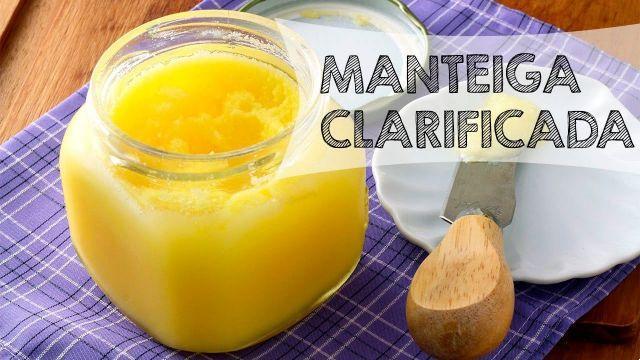
Il clarified butter, also called ghee, is obtained by removing proteins and water from butter and has been common in Indian culture for thousands of years.
Let's find out what are the main benefits and differences between ghee and classic butter.
- What is clarified butter
- Properties and benefits of clarified butter
- Nutritional values of clarified butter
- You use clarified butter in the kitchen
- Difference between butter and clarified butter
- Contraindications of clarified butter
- How to make homemade ghee
What is clarified butter
Il ghee butter o clarified butter it is obtained by removing the water and the protein component from the butter and is therefore composed almost exclusively of fats.
It has been used in Indian cooking and Ayurveda (traditional Indian medicine) for thousands of years and has recently also spread to other countries.
Properties and benefits of clarified butter
Ghee is used in Ayurvedic medicine for its beneficial properties, some of which have been confirmed by scientific studies. Here are some science-backed benefits:
- It reduces intestinal inflammation and promotes digestion.
- Contrasts obesity, cancer and hypercholesterolemia.
- Promotes cardiovascular health.
- Promotes the absorption of vitamin A.
Nutritional values of clarified butter
100 g of clarified butter provide:
- 186 kcal
- 0,3 g protein
- 99,5 g fat
- G carbohydrates 0
- Fiber 0 g
You use clarified butter in the kitchen
Clarified butter subjected to high temperatures produces much less acrylamide (toxic substance) than vegetable oils.
In addition, it has a high smoke point (temperature at which fats begin to decompose) compared to classic butter or butter substitutes.
This makes ghee butter more appropriate for high temperature cooking, such as frying. However, it can also be used for sautéing, roasting, baking or seasoning toast or vegetables.
Difference between butter and clarified butter
Butter and clarified butter have a rather similar nutritional profile, however, here are some differences:
- Ghee, having been deprived of water and protein, has a higher content of grassi.
- Clarified butter is richer in butyric acid and conjugated linoleic acid, respectively related to lower intestinal inflammation and risk of obesity.
- Ghee butter is naturally free of lactose and milk protein.
- Ghee butter has a higher smoke point, which makes it more suitable for high temperature cooking.
Contraindications of clarified butter
Clarified butter has no particular contraindications, however, being rich in fats (including saturated), it is good to limit its consumption, especially in case of dyslipidemia or cardiovascular risk.
How to make homemade ghee
How to clarify butter at home? It is very simple and requires the use of only one ingredient: butter! Here she is clarified butter recipeo:
- Cut a stick of butter into cubes and let it melt in a pan over low heat.
- As soon as it has melted, raise the heat and, when it boils, lower it again, removing the foam and the white component on the surface with a skimmer.
- Over low heat, let it cook for about 20 minutes, after which, let it cool and then filter the ghee with gauze in airtight jars.
Homemade ghee will keep at room temperature for up to several months.
Bibliography and sources
Potential beneficial effects of butyrate in intestinal and extraintestinal diseases, World journal of gastroenterology
Conjugated Linoleic Acid Effects on Cancer, Obesity, and Atherosclerosis: A Review of Pre-Clinical and Human Trials with Current Perspectives, Nutrients
Omega-3 fatty acids and cardiovascular disease, European review for medical and pharmacological sciences
FoodData Central, U.S. DEPARTMENT OF AGRICULTURE


























